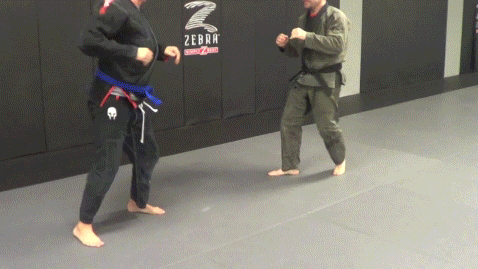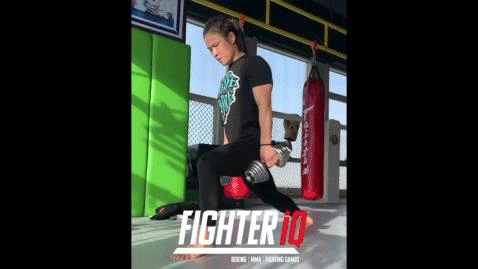johnwang wrote:I started my Taiji training when I was 7. Taiji was my 1st CMA style. After this many years, there are some "internal" principles that I just don't agree with:
1. Formless - I don't believe this can be achieved. You left arm/leg has to be as good as your right arm/leg which is not realistic.
2. If you don't move, I won't move - I believe give first and take afterward.
3. Power generation is solution for all - I believe there is right key for the right lock.
4. Double weighted - If you have to lift an heavy object off the ground, double weighted is a must.
5. Sticky - hook is much stronger than glue.
6. Technique is not important - I believe technique is very important.
7. Leg skill can affect your own balance - I believe leg skill can also affect my opponent's balance.
8. Push - I don't believe in push. I believe in throw and control.
9. …
Many "internal" principles that I do agree with:
1. Body coordination.
2. Body unification.
3. Borrow force.
4. Use mini effort to achieve maximum result.
5. ...
1. Yet TJQ obviously also has techniques (as learned in forms, drills, applications, fighting, etc.). The thing is that the principles underlying those techniques should be present in all the various techniques/movements; therefore the principles are “formless” (not dependant on a specific form or application), although they should be applied to all techniques. I sometimes use the art of BGZ to illustrate this since Dong taught each of his students somewhat differently based on their individual backgrounds, physiques, etc. with wrestlers taught “differently” than strikers...; but all utilize the “formless” principles in their various styles of BGZ and in the forms and applications that come from each style. One could also say that the principles apply to all styles of TJQ (although each may emphasize different things) regardless of the form differences between them (i.e., the principles applied to the various TJQ styles is “formless”, and it is these “formless” principles that unites them all as being variations of TJQ). Or one could say that the “formless” characteristics are what lead to TJQ, BGZ and XYQ being grouped together into the “internal” styles, despite the differences seen in these three different arts.
For me, the TJQ principle is striving for the quality that a ball (or a gearbox, or positive and negative rotations, or however else one’s tradition describes it) has in interacting with incoming forces...
http://slantedflying.com/be-the-ball/The problem is that the classic writing for TJQ are vague enough that they are open to numerous divergent interpretations. To me it is pretty much just overlaying the taiji (yin+yang) principles as the “formless” principle applied to whatever one’s fighting encompasses (regardless of the emphasis on shuaijiao, or striking, or pushing...).
http://slantedflying.com/hitting-taijiquans-sweet-spot/The taiji (yin+yang) principle is formless, regardless of what forms it is applied to. But differing interpretations of how to do that, as well as personal preferences..., is what lead to different styles (or interpretations) of TJQ.
2. Yea, I sort of agree with you here (although perhaps for different reasons):
http://slantedflying.com/taking-the-initiative-in-taijiquan/3. I sort of agree with you here as well. For me the “internal” practice is in generating the power in a manner that produces a balance and coordination through one’s body such that both yin and yang are simultaneously produced and one does not separate the actions such that practitioners are “incorrectly” only committing to one or the other energy at a time. This is also about the quality of the ball (and six direction forces, or however else one’s tradition explains it).
http://slantedflying.com/six-direction-force-in-taijiquan/4. A lever can lift a heavy weight off of the ground without being “double weighted” can’t it? A lever can be used to illustrate TJQ principles (yin+yang, or the two ends of the lever, united around the center, or the fulcrum of the lever...).
5. Of course hooking and grabbing are also a part of TJQ (e.g., caijin). What the stickiness allows (when emphasized) is the qualities of the ball when interacting with the opponent (i.e., not letting the ball’s energy separate from the opponent). For striking (or cutting when using a weapon...) one can certainly separate from the opponent, but when emphasizing controlling them, then it is better to maintain the contact point (i.e., being sticky).
6. See the answer to #1.
7. I also agree here, but if the quality of the ball (yin+yang, or “gearbox”, or six direction force...) is maintained, then one will not sacrifice one’s own balance when using the legs to affect the opponent’s balance. I practice to maintain my own canter while disrupting the opponent’s canter.
8. Push is a safe way to train, and push and pull (and other energies) are typically used to set up “finishing moves” and only infrequently are the finishing move itself. You use push energy (though usually combined with a simultaneous pull, i.e. liejin) when you throw and control. If you prefer techniques that use leijin, then that is fine (it is certainly included as a part of TJQ), but others may prefer to emphasize techniques that use other energies (which is also fine, and is still TJQ, including anjin).
9... Perhaps these are just differences in the interpretation of the principles?
John, You seem intent on questioning “is this technique internal” rather than “is this technique being done in such a way that it incorporates (various) internal principles” - e.g., while a punch is a punch (technique), a karate practitioner will likely know that their straight punch is improved if the non-punching fist is drawn back to the opposite hip in coordination with the outgoing fist (incorporating one “internal” dynamic), and they may also realize that the outgoing fist rotating/drilling as it hits the target is better (incorporating another “internal dynamic”)... So is the punch internal? [Perhaps, or perhaps not, depending on the principles used to deliver that punch.] Others have tried to point this out to you, but you do not seem to be hearing them. Can someone who has not trained “internally” deliver an “internal” punch? Possibly, but the more one trains internally the greater should be their chances of incorporating more and more internal principles on a more and more consistent basis. Is a karate punch “internal”? It does incorporate some “internal” principles, but lacks others, e.g., the punch needs to be cocked and comes to an abrupt ending vs. the “circularity” (or continuity, non-ending delivery mechanism) that I associate with being “internal”. So, is a punch just a punch, or is it no longer just a punch...?
I view “external” vs. “internal” as a continuum rather than a duality. Since my current emphasis/understanding leans towards the continuity of potential actions (i.e., no technique coming to a dead stop that needs some recovery movement prior to changing to another technique...), then I would view a typical karate punch to be on the “external” end of the spectrum [when evaluating it on that particular criterion] (although it would not be ALL “external” since it contains some “internal” characteristics). I want my punch to retain the potential for other actions, such as smoothly changing to a grab and pull if/when the punch is blocked, or changing from a straight punch to a hook, etc., as appropriate for the specific situation (i.e., “formlessness”). I want any specific technique to retain the potential to change into other techniques in a smooth and continuous action that does not require stopping in order to make the change. While that is my current focus, there are numerous other valid “internal” characteristics that other practitioners could focus on (e.g., effortlessness, like your post illustrating the benefit of contact to the head rather than the chest...).
There are certainly different approaches that a practitioner can take in learning to incorporate the “formless” “internal” principles into their art. One can focus on learning the principles first such that they become a part of how one moves, and then learn specific techniques using those principles. One could instead learn techniques first and then try to relearn them in a way that incorporates more and more of the “internal” principles. Most practitioners are probably somewhere along the spectrum connecting those approaches. I do not know which approach would be better. The first takes a long time because it is difficult to incorporate those principles consistently in all the techniques that one uses. Conversely, the second approach gives techniques that can be use fairly quickly, but probably of a lower quality, that would need to be modified over a lengthy period in order to incorporate the desired principles. It is often difficult for some people to modify old habits, and we ideally want the principles to be universally applicable, not just this way for this technique, and then relearning “another” way for a different technique. I prefer striving for a universal key (i.e., the “master key” concept, although my understanding of what this “master key” is may differ from what others think, and my understanding could change with further progress in my art), rather than having a large collection of different keys. Each technique [door] would be different, but the principles [key(s)] used for each are unified into one
But there are many paths to the top of the mountain. I am nowhere near the top of the mountain, so I am probably not qualified to evaluate different approaches used by different traditions or individuals on their way up. But my teaching has taught me that everyone is unique, and each person would probably benefit if a teacher had the ability to create a training program that was ideally and specifically suited to each individual student. As it is, I just muddle through (especially when teaching group classes) trying to do at least a satisfactory job that all students can progress with at least to some variable degree.











